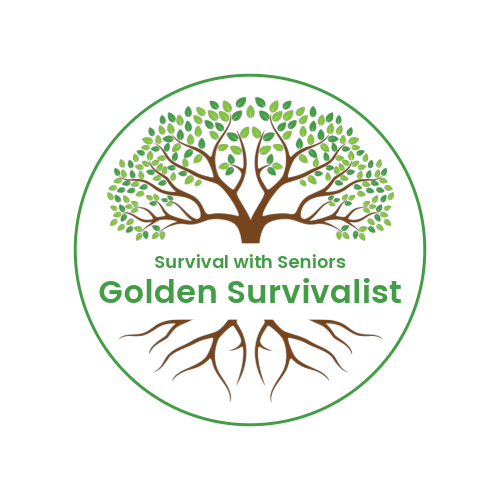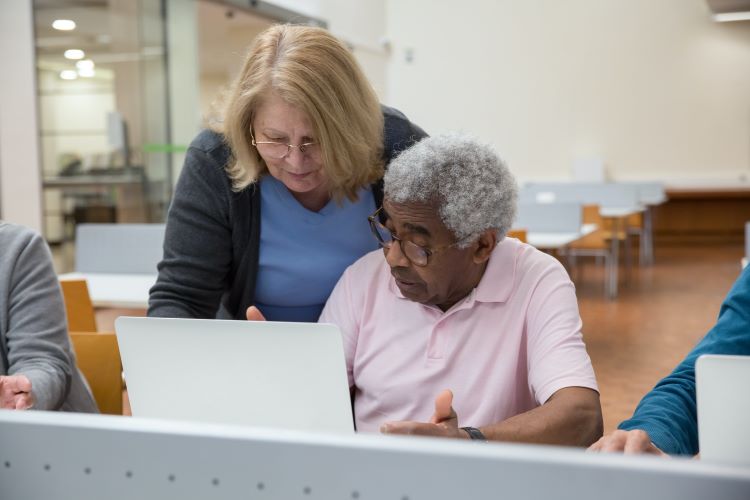Basic Sign Language Vocabulary Every Senior Should Know
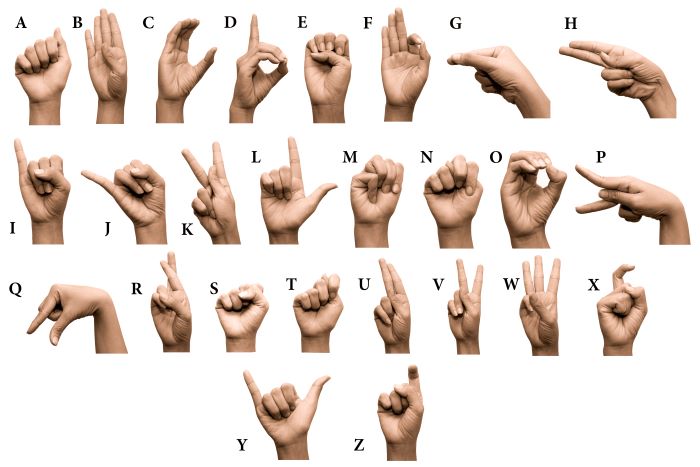
Learning sign language can feel like unlocking a new world of communication. American Sign Language is more than a new skill for seniors; it’s about maintaining social connections, engaging the brain, and increasing independence. Plus, let’s face it, it’s pretty cool to talk with your hands!
American Sign Language (ASL) is the go-to sign language in the United States. It’s a fully-fledged visual language with grammar and syntax quite different from spoken English. You don’t need to string signs together like you’d form sentences in English. For example, instead of asking, ‘How are you?’ in ASL, you might sign ‘how you?‘ It’s more straightforward and efficient, with no extra fluff.

Thanks to Pavel Danilyuk of Pexels.com
Click on this link to about a hundred basic ASL signs frequently used by parents and their young children.
One key difference is that ASL omits words like ‘is,’ ‘are,’ ‘a,’ and ‘to’ because they’re understood through context. This streamlines communication and keeps things visual. So if you’re signing ‘Where is the bathroom?’ Don’t bother with ‘where is’ – just go with ‘where bathroom?’
Starting with the basics is crucial. Imagine jumping into advanced vocabulary without knowing how to ask someone their name or say ‘please’ and ‘thank you.’ The basics lay the groundwork and give you the confidence to build on more complicated signs. Trust me, it’s worth the effort.
So, are you ready to unlock this new world? Buckle up and get ready to wave, point, and express yourself in a new way!

Click here or image to open in a larger window.
Fundamental ASL Vocabulary Every Senior Should Know
When starting with ASL, memorizing key signs can make a huge difference. It’s kinda like learning how to order coffee in a new language before trying to read a novel. These basic signs will get you through the most common interactions and help build your confidence.
The first one is: ‘Hello‘. This one’s easy and friendly.
- Use your dominant hand, put it to your forehead, and extend it out.
- Think of it like a casual salute.
- Perfect for greeting friends and striking up conversations.
The next one is ‘Goodbye’. Just as simple.
- Extend your palm out and wave with your hand facing away from you.
- It’s your classic wave but with intention.
- Nailing this one is awesome for polite interactions and ending conversations smoothly.
Now do, ‘I love you.‘ This one’s a bit more involved but so worth it.
- Point to yourself, cross your arms in front of your chest, then point to the person you’re talking to.
- You’re signing your affection straight from the heart; it’s sweet and meaningful.
Let’s talk about feelings.
For ‘happy,’
- keep your hands flat, facing your chest,
- and pull them up while making a happy face.
- Showing emotion while you sign really brings the message home.
For ‘sad,’
- place your hands in front of your face, palms facing you,
- then bring both of your hands down while making a sad face.
- Expressing feelings like this connects you more deeply with others.
Mastering these basics is like having a toolkit for everyday situations. The more you practice, the more natural they’ll feel. Practice in front of a mirror or with a friend; soon enough, you’ll sign confidently.
With Clear and Large Pictures
Learn ASL Easily and Unlock the Secrets of Expressive Communication with This ALL-INCLUSIVE Learning Companion!
This exclusive video training course bonus includes 240+ signs to make ASL learning a breeze.
Have you ever been captivated by the elegance and expressiveness of sign language?
Are you eager to connect with the Deaf and Mute community?
Have you been wanting to learn this amazing and unique language but struggling with finding the right resources?
Learning a new language can be intimidating, especially when there are so many complicated guides that are impossible to follow.
Good thing you’ve just found this guide that breaks down the complexities of ASL into simple lessons that anyone can understand!
This 3-in-1 ASL learning guide is meticulously designed to take you on an immersive and rewarding experience, with an exclusive video training course included + easy-to-follow clear and large pictures (8,5x11 inches book size), transforming you from a beginner to a fluent signer in no time at all.
Book 1 is perfect for mastering the fundamentals, Book 2 focuses on grammar as the building blocks of communication, and Book 3 is designed to enhance your conversation skills.
Discover:
- Step-by-Step Lessons for Beginners: Each chapter introduces essential signs and vocabulary, accompanied by clear and large pictures to ensure you grasp the intricacies of each sign effortlessly.
- Fluency in 21 Days!: The carefully crafted lessons, exercises, and practice activities build your confidence, enabling you to hold conversations, express emotions, and fluently sign in just 21 days.
- A Wealth of Resources: This offers more than just sign instruction. You'll also find a cheat sheet of common vocabulary phrases and words to further enhance your conversational skills.
- Steps to become more inclusive: Expand your language repertoire by learning ASL and never feel awkward or disconnected from the Deaf and Mute community again.
Whether you’re looking to self-study, or you want the ideal supplementary resource for your ASL courses, this is the perfect bundle that will get the job done. You’ll be able to learn ASL from scratch and confidently yourself in sign language, all in less than a month.
So, what are you waiting for?
Essential Phrases in American Sign Language
Let’s move beyond greetings and emotions to phrases you’ll use daily. Knowing these essential phrases will help you communicate effectively in no time.
First, ‘My Name Is.’
- Start by putting your hand on your chest.
- Then, put your first two fingers together on each hand and tap them together.
- After that, spell your name using finger spelling (we’ll get into that a bit later).
This sign is a fantastic conversation starter and helps you introduce yourself effortlessly.
‘Bathroom’ is a must-know.
- Make the letter ‘T’ for ‘toilet’ by placing your thumb between your index and middle finger to form a fist.
- Then, shake your hand a bit.
It’s straightforward and gets the message across quickly when nature calls.
To say ‘Yes,’
- make a fist with your dominant hand and pretend your hand is nodding.
- Pair it with an actual nod of your head for extra clarity.
On the flip side, ‘No’
- involves holding your pointer and middle finger together and bringing them down to touch your thumb, almost like a little puppet snapping its mouth shut.
- Shaking your head adds an extra layer of communication.
Saying ‘Please’ is simple.
- Place your hand flat on your chest
- and move it in a circular pattern opposite to your dominant hand.
- It’s polite and easy; showing manners goes beyond spoken words.
For ‘Thank You,’
- bring your hand up to your chin
- and extend it outward.
- It’s a lovely way to acknowledge kindness.
These phrases are foundational in signing and add depth to your interactions. They’re intuitive, and with some practice, they become second nature. Try incorporating them into your daily routine – the more you use them, the more comfortable you’ll get.
Conversational ASL for Daily Interactions
Now that you’ve mastered the basics, let’s step up your game with everyday phrases. These will help you navigate daily activities and interactions smoothly.
Start with greetings like ‘Good Morning,’ ‘Good Afternoon,’ and ‘Good Evening.’
For ‘Good Morning,’
- place one hand on the back of your other hand,
- raise the hand on top to the side of your head,
- then scoop forward as if you’re gathering the morning sunshine.
- Adjust slightly for afternoon or evening with the sun’s position.
‘How are you?’ is a handy question.
- Sign ‘how’ by cupping your hands and rolling them towards you,
- then point from your chest outward with a questioning look.
To respond, you can use ‘good’ or ‘fine’
- with a flat hand from your lips (for ‘thank you’)
- and move it forward for ‘good.’
For ‘fine,’
- extend your hand with fingers spread
- and touch your chest with your thumb in a relaxed manner.
‘Have a good day/night/weekend’ follows similar logic.
- Combine the signs you’ve learned: ‘good’ plus ‘day,’ ‘night,’ or ‘weekend.’
- Practice makes it flow naturally!
Another important phrase is ‘Can I help you?’ or ‘How can I help you?’
For ‘help,’
- make a thumbs-up sign with one hand
- while the other hand flatly supports it.
- Move from your chest outward, showing you’re ready to assist.
- It’s versatile – you can use it in various contexts.
Getting directions or finding places is another common scenario.
‘Where is___?’ (e.g., bathroom, food) is crucial.
- For ‘where,’ wag your index finger and add the sign for the location you’re looking for.
- ‘Bathroom’ uses the ‘T’ sign, while ‘food’ is mimicked by tapping your fingers against your mouth. Easy peasy!
When you don’t recognize a sign, ‘How do you sign [finger spell word]?’ is your lifesaver. Just finger-spell the word and look inquisitive.
Politeness goes a long way. Signs for ‘Sorry,’ ‘Excuse me,’ and ‘Please’ are everyday niceties.
For ‘sorry,’
- make a fist and rub it in a circular motion over your chest.
- ‘Excuse me’ involves brushing the fingertips of one hand across the palm of the other hand.
- It’s all about showing respect.
Finally, once you’ve introduced yourself with ‘My name is [finger spell name],’ follow up with ‘Nice to meet you!’
Sign ‘nice’
- by sliding one hand over the other,
- bring your index fingers together for ‘meet.’
- It’s warm and friendly, and closer to any intro.
Building Your Sign Language Skills
Finger spelling is a game-changer. Being able to spell out words with your hands opens up conversations when you don’t know the specific sign. Each letter has a corresponding hand shape – get those down, and you have a whole new way to communicate.
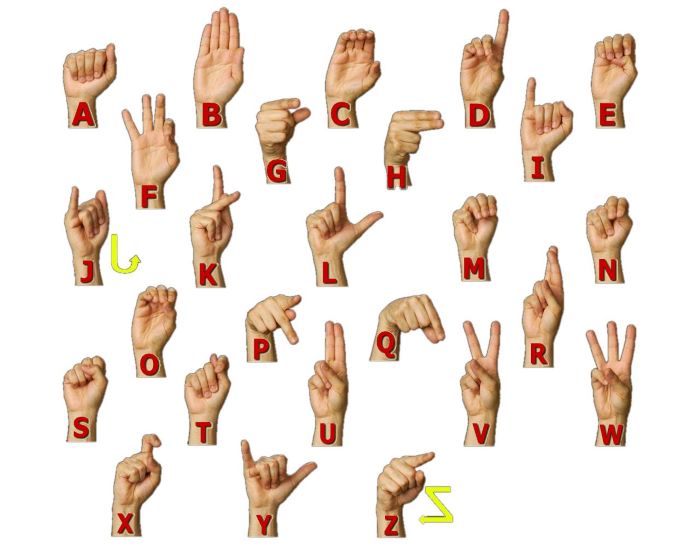
Copyright Lifeprint.com.
You might also want to see Dr. Bill’s ASL fingerspelling and handshape art.
A little practice goes a long way. Start with the alphabet, signing each letter until it feels automatic. Try spelling out names, places, or even grocery lists. Soon enough, finger spelling will be second nature. It’s like riding a bike; muscle memory will kick in.
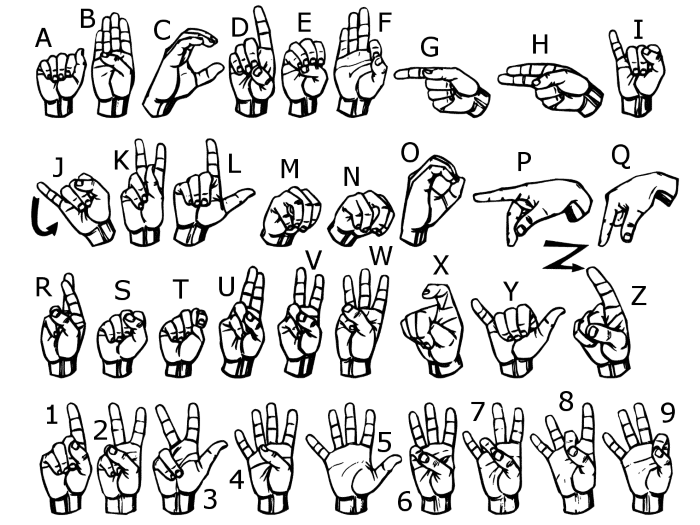
For a copy of the above chart as a Microsoft Word document, see on LifePrint.com
Fingerspelling Chart (.doc format)
Consistency is key. Carve out a little time each day to practice. Even five minutes a day makes a difference.
- Flashcards,
- apps,
- or online videos can be super helpful.
- Engage with communities online or look for local deaf social gatherings to practice your skills in real-world settings.
Don’t forget body language and facial expressions. They’re crucial in ASL, adding context and emotion to your signs. Practice smiling, frowning, or showing surprise while signing. It may feel a bit silly at first, but it’s a big part of effective communication.
Lastly, be patient with yourself. Learning a new language is a journey and every small step counts. Celebrate your progress, no matter how minor it may seem. Keep an open mind, stay curious, and have fun with it. You’re not just learning to sign; you’re embracing a new way of connecting with others.
Do you know ASL? Do you sign? What are your favorite ‘signs’ to use? Do you have anything more to add here? Any other links? Please reply with your comment below.
